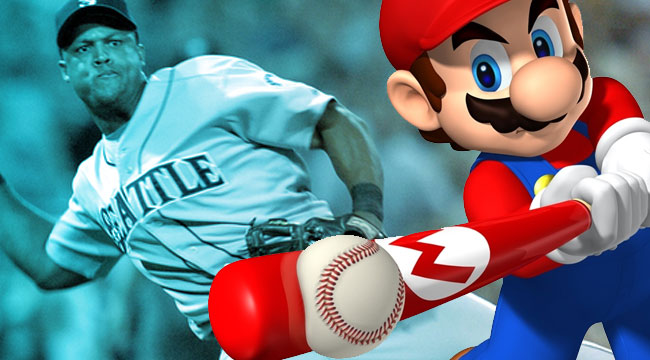
Late yesterday, Nintendo announced it was selling off its majority stake in the Seattle Mariners to a group headed by John Stanton, keeping a 10 percent share of the team for itself. It was a move greeted by many with one question: Wait, Nintendo owned the Seattle Mariners?! They did indeed, and how it happened is a curious story about local sports pride and a Japanese CEO who didn’t care about baseball one bit.
To understand Nintendo’s actions, we need to talk about why the Mariners exist at all. In 1970, Bud Selig, devastated by the Milwaukee Braves moving to Atlanta to be in a larger media market, decided to turn around and do exactly the same thing to Seattle, buying the Seattle Pilots after they had spent one (tumultuous) year in the city and filed for bankruptcy. In response, the city of Seattle, King County, and even the state attorney general of Washington, D.C., dragged the MLB into court for breach of contract. The MLB had guaranteed Seattle a baseball team, and they were going to get it.
The suit dragged out for seven long years, but in 1977, baseball returned to Seattle thanks to further MLB expansion and an ownership group that included White Christmas star Danny Kaye. Unfortunately, the Mariners lost that game 7-0 and followed that up by losing 97 more games in that debut season, drawing approximately 1.3 million fans to the freshly built Kingdom. From there, things only got worse, with three 100-loss seasons and no more than 877,000 in attendance every season up until 1985 when the team finally hit the one million fan threshold once more. It wouldn’t be until 1991 that the Mariners posted a winning record, going 83-79.
Despite that blip of success and the presence of a young nucleus that included Ken Griffey Jr., Edgar Martinez, and Randy Johnson, though, financial uncertainty once again swirled over the head of Seattle baseball with Security Pacific Bank demanding the repayment of a $40 million loan by Mariners owner and radio-station magnate Jeff Smulyan. A development that nearly cost the city its baseball franchise as Smulyan circled a deal that would move the team to Tampa Bay were he not able to find a local group that would keep the team in Seattle, a provision in the team’s lease. Thankfully for Mariners fans, however, a sudden campaign (with a major assist from now-former Washington Senator Slade Gorton, who helped assemble investors) developed to ask Nintendo’s then-president Hiroshi Yamauchi to put a significant amount of money into saving the team.
Yamauchi is, more or less, the man directly responsible for creating Nintendo as we know it. Reluctantly taking over the struggling playing card company in 1949, Yamauchi turned Nintendo into a toy company and ultimately into one of the biggest video game companies in the world. Nintendo itself was relatively new to the Seattle area (though a major employer with over 1,400 employees), having originally founded offices in New York City and moving to Seattle during the ’80s to be closer to its Japanese corporate parent.
Despite their presence in the area, though, asking Nintendo to be involved seemed a little strange. While baseball is enormously popular in Japan, Yamauchi had no interest in the sport. In fact, a combination of business distractions and difficulty traveling meant that he never attended a Mariners game.
To the surprise of everyone, including several Nintendo higher-ups, though, Yamauchi agreed to buy a majority stake in the team out of his personal fortune. It turned out to be a matter of local pride, after a fashion. Yamauchi felt that Seattle had gone out of its way to help Nintendo succeed in America, and wanted to keep the team in Seattle as a gesture of appreciation. What wasn’t appreciated, however, was the idea of foreign ownership in a Major League Baseball team, something that cast the chances of the deal’s success as, in the words of baseball’s then commissioner Fay Vincent, “unlikely.” Though he pulled back on that statement a few weeks later in the midst of a sea change that saw some owners (a group that had failed to draft rules barring foreign ownership) speak out while offering modest support.
In the end, Seattle and Nintendo got their team, though Yamauchi was only given 49 percent control (51 percent of team control was put in the hands of a group of local investors) and limited to a passive role with no day-to-day responsibilities. Since the sale, the Mariners and their fans have endured their share of highs and lows, moving out of The Kingdome into Safeco Field in 1999 and winning a record 116 games in 2001 before losing 101 games in both 2008 and 2010. And in that sense, the Mariners’ two-decades-long odyssey mirrors that of Nintendo, who seemed flummoxed by the growth of Sony in the video-game-console market during the late ’90s before a buzzy return to relevance with the launch of the Wii. As they part ways, though, the future looks promising — the Mariners look like they might be a wild card contender after they stumbled last year following a return to their winning ways in 2014 and Nintendo is looking to bounce back from the failure of the Wii U with the freshly announced Nintendo NX.
So, is this a happy ending? The Mariners didn’t win a World Series and wound up losing a trio of franchise players (Griffey Jr., Alex Rodriguez, and Randy Johnson). That doesn’t feel like a history worth celebrating, and yet, in purely financial terms it is, since the Mariners sold for more than 10 times what they sold for in 1992 and Seattle doesn’t have to hold its breath about the possible loss of its team (they’ve been through that enough with both the Pilots and the SuperSonics) during this changing of the guard.






